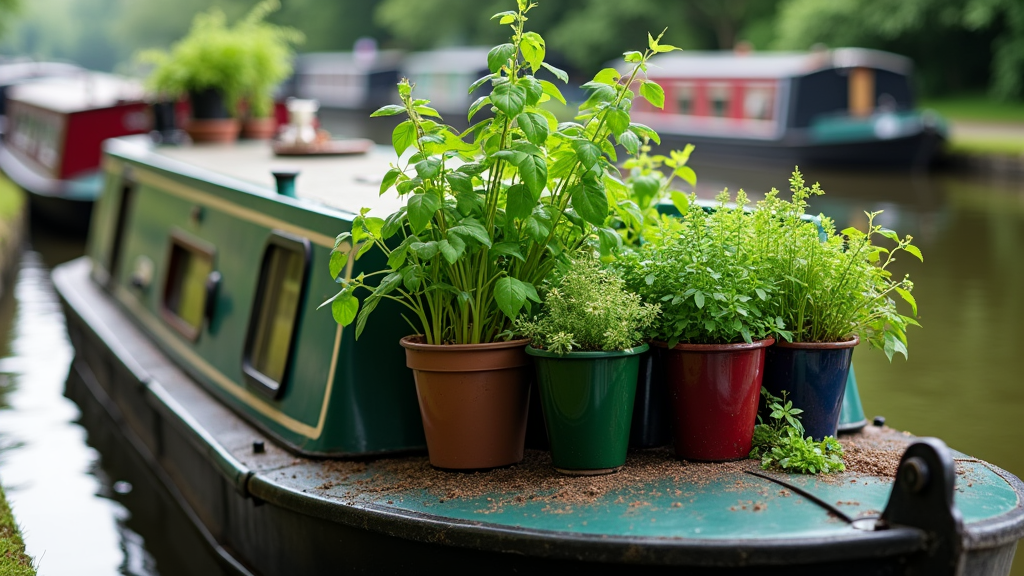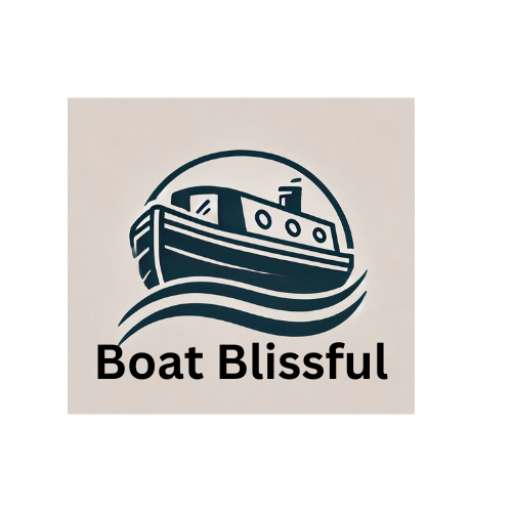Setting Up A Narrowboat Herb Garden
Growing herbs on a narrowboat is such a great way to bring a bit of fresh flavor into your meals while you’re out on the water. Compact spaces can seem limiting, but you really don’t need a huge garden or even much gardening experience to start your own small, productive patch. With a few simple tricks and some reliable setups, it’s totally possible to have fresh mint, parsley, basil, and plenty more handy right outside (or even inside) your cabin. Here’s how I go about setting up a narrowboat herb garden that actually thrives.

Why Grow Herbs on a Narrowboat?
Herbs do really well in containers. Most don’t need deep soil, making them perfect for narrowboat living. Having a few pots or troughs of herbs saves trips into town and adds a splash of life and color to your boat, especially on gloomy days. Fresh herbs have this way of making meals taste brighter, plus they’re really handy for homemade teas or even just a little calming greenery. Since narrowboats have limited space, every bit of homegrown food counts.
I’ve found that growing herbs also turns out to be pretty social; other boaters often swap tips and seeds, plus a fresh sprig of parsley makes a nice gift to a neighbor. It’s a small touch of the good life, even while mostly surrounded by water and steel.
Choosing the Right Herbs for Narrowboat Life
Not all herbs are equally suited for narrowboat gardens, so I stick to varieties that are tough and compact. Here are some reliable options that I recommend for most boaters:
- Basil: Grows quickly, perfect for salads and sauces.
- Mint: Hardy, great for teas, but keep it in its own pot because it spreads fast.
- Parsley: Handles shade better than most herbs and works in almost any dish.
- Chives: Takes up very little space and is good for both salads and garnishes.
- Rosemary: A bit more woody, but pretty drought resistant and perfect for roasts.
- Thyme: Tough, low growing, and doesn’t mind being a little neglected.
- Coriander (Cilantro): Grows easily, loves cooler temps, good for curries and salsas.
I’ve had some success growing dill and oregano too, but if you’re just getting started, sticking to three or four that you actually use often is easier to manage. If you want to switch things up, smaller varieties of sage or lemon balm also do well in limited spaces.
Setting Up Your Herb Garden Space
Space on a narrowboat is tight, so maximizing every inch really counts. Here’s what works best for me:
- Window Boxes: Super handy for both inside and outside, these let herbs soak up light while keeping them out of the way.
- Pots and Planters: Individual pots are ideal for herbs that spread (like mint). Use quality lightweight plastic or recycled containers to keep things easy to move.
- Roof Boxes: If your boat has a flat roof or deck, long trough planters or storage boxes are great for lining up a little green border. Just be sure they’re secured to stop them sliding around.
- Hanging Baskets: These can be hooked onto railings or handrails for a nice vertical setup, which saves a lot of floor space.
Consider using stackable containers or vertical planters if you’re aiming to pack in a wider variety. For me, a mix of two or three containers in different spots means more herbs, and prevents one rough patch of weather from wiping out everything at once. It also gives your boat more pops of color and makes it feel even cozier.
Narrowboat Herb Gardening Basics
Keeping herbs happy isn’t that complicated, but there are a few basics that really help. These are my go-to principles for a healthy, thriving mini garden:
- Soil: Use a lightweight compost or potting mix. Herbs don’t need super rich soil but good drainage is really important. Some people even mix in a bit of sand to help drain water away.
- Sunlight: Most herbs want at least 4-6 hours of sunlight each day. If your spot is shady, stick with stalwarts like parsley or mint that manage with less. Moving pots around to follow the sun is a good trick too.
- Water: In pots and boxes, herbs dry out quicker, especially on hot days, so checking the soil every morning is part of my routine. Water when the top inch feels dry, but don’t flood them. Watering in the early morning works better than in the heat of midday.
- Fertilizer: Occasional liquid feed helps, but I honestly don’t overdo it. Too much can make the herbs leafy but flavorless. Compost tea or a few worm castings sprinkled on top is often enough.
In windy weather, I move delicate plants inside. Thin stemmed herbs (like basil) need shelter, while tough types like rosemary manage outdoors most of the year. If you travel a lot, think about grouping all your pots in one easily moveable tray or crate so you can bring them in fast if the weather takes a turn.
Dealing with Common Challenges
Narrowboat living brings some unique herb garden issues; between movement, variable weather, and less space, you’ll run into a few things. Here are some frequent problems with simple ways I handle them:
- Waterlogging: Heavy rain or careless watering can drown your herbs. Drill holes in all pots and use stones at the bottom for drainage. Elevate containers to help water drain out.
- Heat Stress: Metal boats heat up fast in the sun. Moving pots to shadier spots or using reflective trays under them helps keep things cooler. Sometimes, grouping plants together also keeps roots from overheating.
- Cold Snaps: Even hardy herbs can struggle in a frost. On cold nights, I bring tender pots into the cabin by a window. Bubble wrap or fleece over the boxes works too. Tin foil behind your indoor pots helps reflect extra light in the winter months.
- Wind: Gusty weather on rivers or canals rocks the boat and can knock over containers or snap fragile stems. Secure all planters well, and keep vulnerable herbs lower or sheltered. If storms are brewing, moving all containers inside the boat is safest.
Pests and Disease
Aphids and slugs are usually the main culprits, but boats get fewer pests than land gardens. I check leaves regularly, hand remove bugs, and sometimes use soapy water spray if needed. For persistent problems, picking healthy, resistant herbs in the first place saves a lot of hassle. Keeping your pots clean and rotating herbs can also stop diseases from spreading if one plant gets sick. If you notice persistent yellowing leaves or stunted growth, think about refreshing the soil or splitting up crowded pots.
Tips for Harvesting and Using Your Herbs
Fresh herbs are best picked right before you need them. Snipping the tops with scissors encourages new growth and keeps your patch bushy instead of leggy. For most herbs, the more often I pick, the healthier the plants stay. If you end up with a bumper crop, hanging sprigs to dry or freezing chopped herbs in ice cube trays saves that fresh taste for later. Drying herbs is as simple as tying bundles and hanging them somewhere dry and warm inside the boat. Freezing chopped herbs with a little oil in cube trays is a favorite trick of mine for quick stews or omelets.
- For Cooking: Add leafy herbs like basil and parsley at the end of cooking for full flavor. Hardy types like rosemary and thyme go in earlier.
- For Tea: Mint, lemon balm, and chamomile make easy homemade teas. Just a handful of leaves in a mug with boiling water does the trick.
- For Sharing: Offering spare cuttings to neighbors is a great way to exchange tips and keep your boat community connected. Trading seeds or swapping recipe ideas often leads to making new friends on the water.
Top Equipment and Supplies You’ll Find Useful
A few simple tools make narrowboat herb gardening much easier:
- Sharp Scissors or Snips: Needed for tidy harvesting and keeping plants in shape.
- Lightweight Watering Can: Small, easy to store, with a gentle sprinkle head. Bottles with small spouts also work well.
- Mini Trowel: For repotting and top ups; nothing fancy needed.
- Plant Labels: Super useful if you’re forgetful, or experimenting with different varieties. Recycled lids or pebbles make great, free labels.
- Pest Netting or Fleece: Handy for keeping bugs at bay or covering herbs in frosty weather.
A collapsible gardening bag or basket for easy storage keeps things tidy and stops mud from getting everywhere inside. Rubber mats under pots also add grip and protect your boat’s surfaces, especially when you’re moving.
Frequently Asked Questions About Narrowboat Herb Gardens
I get a lot of questions from people new to herb gardening on narrowboats, so here are a few that come up most often:
Question: Which herbs are easiest for beginners?
Answer: Mint, chives, and parsley are usually the toughest and most forgiving. Just give them a decentsised pot and regular water, and they’re pretty reliable.
Question: How do I stop herbs from blowing away on windy days?
Answer: Make sure planters are weighted down with gravel or secured with bungee cords. Keeping fragile herbs lower down or indoors helps during stormy weather.
Question: Can I grow herbs inside my narrowboat?
Answer: Absolutely. A bright windowsill works well for basil, chives, or parsley. If natural light is weak, small LED grow lights give a boost, especially in winter. Some boaters even suspend planters from the ceiling to let vines trail down.
Question: How do I avoid water damage from my indoor pots?
Answer: Always use drip trays, and water slowly to avoid overflow. Placing herbs on a nonslip mat keeps moisture off your window sills or tables. Rotating your pots to make sure each one gets its share of light helps keep things tidy below too.
Final Thoughts on Growing Herbs on a Narrowboat
A narrowboat herb garden doesn’t need to be complicated or expensive. With a handful of durable herb varieties, some smart containers, and regular attention, anyone can grow fresh ingredients and brighten up life on the canals or rivers. It’s a low effort way to enjoy better meals and a bit of extra nature every day. No matter if you’re new to boating or have lived afloat for years, a few green plants close by are always a welcome addition.
